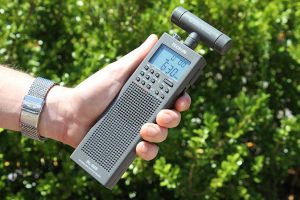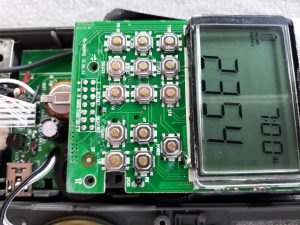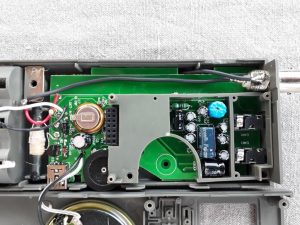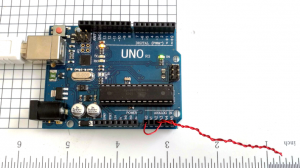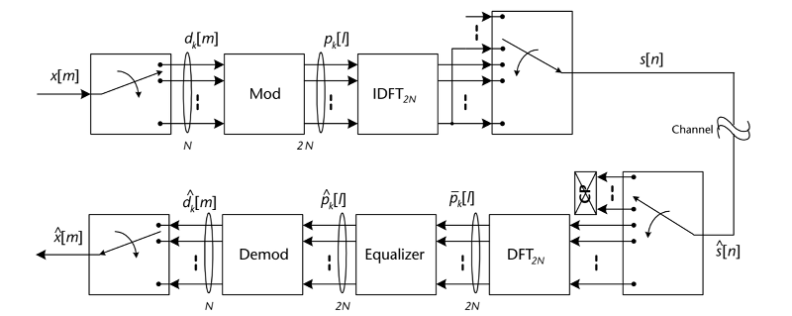
Chances are you have at least one radio that can receive FM stations. Even though FM is becoming less used now with Internet and satellite options, it still is more popular than the older AM radio bands. FM was the brainchild of an inventor you may have heard of — Edwin Armstrong — but you probably don’t know the whole story. It could make a sort of radio-themed soap opera. It is a story of innovation, but also a story of personal vanity, corporate greed, stubbornness, marital problems, and even suicide. The only thing missing is a long-lost identical twin sibling to turn it into a full telenovela.
Early Days
 Armstrong grew up in New York and because of an illness that gave him a tic and caused him to be homeschooled, he was somewhat of a loner. He threw himself into his interest in electric and mechanical devices. By 1909 he was enrolled in Columbia University where professors noted he was very focused on what interested him but indifferent to other studies. He was also known as someone more interested in practical results than theory. He received an electrical engineering degree in 1913.
Armstrong grew up in New York and because of an illness that gave him a tic and caused him to be homeschooled, he was somewhat of a loner. He threw himself into his interest in electric and mechanical devices. By 1909 he was enrolled in Columbia University where professors noted he was very focused on what interested him but indifferent to other studies. He was also known as someone more interested in practical results than theory. He received an electrical engineering degree in 1913.
Unlike a lot of college graduates, Armstrong didn’t go work for a big firm. Instead, he set up a self-financed independent lab at Columbia. This sounded good because it meant that he would own the patents on anything invented there. But it would turn out to be a two-edged sword.
Tubes and Villians
 Every good story needs a villain or two, and this one is no exception. The first one is Lee de Forest, the man who invented the triode. History hasn’t painted de Forest kindly, and some of the reasons for that are because of his interactions with Armstrong. However, there’s more than that.
Every good story needs a villain or two, and this one is no exception. The first one is Lee de Forest, the man who invented the triode. History hasn’t painted de Forest kindly, and some of the reasons for that are because of his interactions with Armstrong. However, there’s more than that.
Technically, Thomas Edison invented the vacuum tube as an offshoot of experimenting with light bulbs. He knew electrons were streaming away from the filament and put an electrode in — what we would call a plate — to collect them. He didn’t have any real idea what to do with the device, though.
In 1904 John Fleming realized that the device operated like a check valve allowing current to flow in one direction but not the other and demonstrated using it as a rectifier. This is why people in some parts of the world call tubes Fleming valves.
 What de Forest added to the mix was to put a grid between the filament and the plate. He was actually trying to build a radio detector that used ionized gasses and filed a patent on a two-terminal device in 1907. The grid was initially on the outside of the glass tube, which didn’t work well. Once it was moved inside the tube, it allowed a small signal on the grid to be amplified at the plate. De Forest called this tube the audion. There were a few reasons it didn’t work very well, not the least of which is that de Forest erroneously thought that having a little gas left in the tube was essential for its operation. We know now, you want less gas, not more.
What de Forest added to the mix was to put a grid between the filament and the plate. He was actually trying to build a radio detector that used ionized gasses and filed a patent on a two-terminal device in 1907. The grid was initially on the outside of the glass tube, which didn’t work well. Once it was moved inside the tube, it allowed a small signal on the grid to be amplified at the plate. De Forest called this tube the audion. There were a few reasons it didn’t work very well, not the least of which is that de Forest erroneously thought that having a little gas left in the tube was essential for its operation. We know now, you want less gas, not more.
This all fits in with the historical accounts that de Forest didn’t fully understand the tube. He was just trying different things to see what would work — not always a bad thing, especially in those days where others worked with a similar methodology. He even reportedly said:
I have arrived, as yet, at no completely satisfactory theory as to the exact means by which the high-frequency oscillations affect so markedly the behavior of an ionized gas.
If he was just a practical inventor, that wouldn’t make him a villain, though. However, when Marconi, who held the Fleming patent, sued that the audion infringed, de Forest took the position that the two devices were completely different. Of course, they were not. A court sided with Marconi although since the grid was a patentable improvement, so the two sides agreed to exchange rights.
We think of protracted court battles over intellectual property as a modern problem. Perhaps it is true that the more things change, the more they stay the same.
Back to Armstrong
Armstrong grew up experimenting with gassy low-quality audions. He was determined to understand how the device worked in a scientific way. While at Columbia he did comprehensive studies and found that using positive feedback could create much higher amplification — enough to drive speakers instead of headphones. This is the basis behind a regenerative receiver. The signal is amplified many times over getting stronger each time. In addition, Armstrong learned that if you increase the feedback, you get sustained oscillations. This would be a huge breakthrough for radio to have a reliable way to generate radio waves electronically.
Armstrong filed for a patent in 1913. Lee de Forest predictably discounted Armstrong’s work for a few years. Then in a surprise move in 1915 he filed patents for the same inventions claiming he had priority because of a lab notebook he had dated in 1912. World War I intervened, however, so things moved slowly.
Regenerative receivers were sold until another Armstrong invention would replace them. Regens are still popular with hackers because they generally have a very low parts count. If you want to learn more about how they work, check out Stan’s video analysis of one based on a FET which isn’t very different from a tube.
War Time
During the war, Armstrong also developed the superheterodyne receiver: a common architecture even today where a frequency of interest is converted to a single intermediate frequency for amplification and filtering prior to detection.
By 1919 Armstrong was in court on two fronts on the de Forest patents. To finance his legal fees, he had licensed several companies to make regenerative receivers for amateurs and experimentation. He was also shopping for a big corporation to buy the rights. Westinghouse wound up with both the regenerative and superheterodyne patents. By 1928, the courts would actually decide a Frenchmen named Lévy invented the superheterodyne first.
The Regenerative Patent
The legal front on regeneration was quite different. Both the court and the patent office decided that de Forest’s patents were not valid. However, Armstrong didn’t want to settle for the compensation offered by de Forest. This allowed de Forest to appeal the case, which he eventually won through two further appeals up to the Supreme Court.
This move shocked most people in the radio business at the time. Armstrong attempted to return an award he received from the IRE (the Institute of Radio Engineers) and the institute refused to accept the return, publically stating they rejected the court’s findings.
Although Armstrong didn’t do well in court, he did have a little luck. While dealing with the legal end of things, he stumbled on an improvement to regeneration called super regeneration. That patent netted him $200,000 and 80,000 shares of RCA stock which made him the largest shareholder. Keep in mind, too, that $200,000 in 1922 was a fortune. RCA wound up never actually producing radios using this technology, as the superheterodyne turned out to be far superior.
Which Brings us to FM…
In case you forgot, all this was leading into the invention of FM radio. AM radio is very prone to noise and fading because these show up as changes in amplitude — the A in AM. During the 1920s, Armstrong was trying to think of ways to improve AM radio. FM — modulating frequency instead of amplitude — had been largely dismissed because of an incomplete analysis of FM done by John Carson showing that FM would not improve on the quality of AM.
By 1928, Armstrong started working with FM despite its detractors, and the key was using a wider bandwidth. Armstrong filed for patents in 1933. RCA had the right of first refusal on his patents by this time, but they were unimpressed with a system that was complex and was not compatible with existing equipment.
Armstrong went to smaller radio companies like General Electric and Zenith. He also got the FCC to allocate a band for this new kind of radio with 40 channels in the 42 to 50 MHz range. You might notice that this isn’t where the FM band is today. That will play a part in the story to come. There’s a lot of pictures of old FM radios, for this band online. Oddly enough, this band displaced another attempt to do “better” radio called Apex radio — a topic we will cover in the near future.
The Million Dollar Question
 At first, RCA saw FM as a threat to their existing businesses and did everything they could to prevent Armstrong from demonstrating the system to the public. Despite this, Armstrong did get the FCC interested in FM and even built his own FM station W2XMN to help get things moving.
At first, RCA saw FM as a threat to their existing businesses and did everything they could to prevent Armstrong from demonstrating the system to the public. Despite this, Armstrong did get the FCC interested in FM and even built his own FM station W2XMN to help get things moving.
The first broadcast was in 1939. There were only 25 FM receivers in the world at that time, so the audience wasn’t very large.
RCA finally wanted to get into the FM game, but they didn’t want to pay Armstrong royalties. In 1940, they offered him a cool million dollars for a non-exclusive but royalty-free license. Armstrong didn’t feel like it was fair to other companies that were paying 2% on their sales. He refused and this would become a fateful and ultimately pointless decision.
To the right, you can see a magazine cover from 1940. The picture shows a million volt arc that totally ruins AM reception but didn’t interfere at all with the FM radio.
Band Adjustment
Because of World War II, there were comparatively few FM receivers and stations in service on the new frequency band. I say comparatively because ultimately there would be nearly 400,000 receivers in service compared with millions of AM radios.
Signals around 50 MHz are subject to propagation effects that can cause interference. RCA lobbied fiercely to move the FM band and Armstrong vigorously countered it. In his opinion, RCA only wanted to disrupt the existing base of FM stations and receivers, perhaps because he wasn’t willing to take their million dollar offer.
Since you know the current FM band is from 88 to 108 MHz, you can probably guess which side won in 1945. Still, Armstrong was convinced that FM was the future and even hired a public relations firm to spread the word about FM’s superiority.
RCA would eventually develop what they claimed were non-infringing FM patents and even encouraged other companies to stop paying royalties to Armstrong. He sued, but RCA was able to tie the case up for years.
The Bitter End
The two obvious villains in this story were de Forest and David Sarnoff of RCA. However, there’s a third villain: the courts. Being constantly embroiled in legal battles with a giant company takes its toll on your pocketbook and on your mental health.
Facing bankruptcy, Armstrong approached his wife Marion (who had been, by the way, David Sarnoff’s secretary) about returning money he had given her to put aside for their retirement. She refused and in 1954 he took a swing at her with a fire poker. Unsurprisingly, she left him.
Armstrong lived in an apartment on the 13th floor of the New York River House. With his wife gone and three servants done for the day, Armstrong removed an air conditioning unit, put on a nice suit, a hat, overcoat, and gloves. Then after writing a two-page note, he walked out the window, plummeting to his death on a third-floor balcony. The New York Times reported that he was heartbroken over the loss of his wife and regretted hurting her.
It is ironic that Armstrong turned down the million dollars. After his death, Marion settled with RCA for — what else — a million dollars. She also pursued other court cases, defending his patents and receiving infringement awards from other manufacturers. FM would really take off after General Electric added stereo to FM in the late 1950s.
A sad end to a prolific inventor that created a lot of technology we still use today. It is hard to say for sure if the villains in a story like this were really as bad as they appear or just unable to present their side of the story. On the other hand, history is written by the victors and Armstrong certainly wasn’t the victor. That’s got to mean something.
As I was writing this, though, one thing did strike me. Most of the world — including the United States — has gone to a patent system where “first to file” gets priority. I’ve always thought that is bad for us hackers because we are less likely to quickly file patents and, thus, more likely to get knocked out by a big company spewing out dozens of patent disclosures a day. But this is a case where first to file might have totally changed Armstrong’s life for the better. It also reminds me that even though most of us don’t file patents often, maybe we should think about it. Maybe big companies are going to control all the upcoming innovations because — unlike Armstrong — we are letting them.

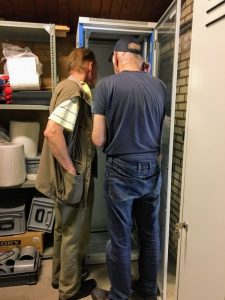
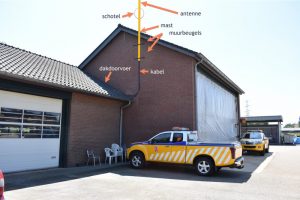
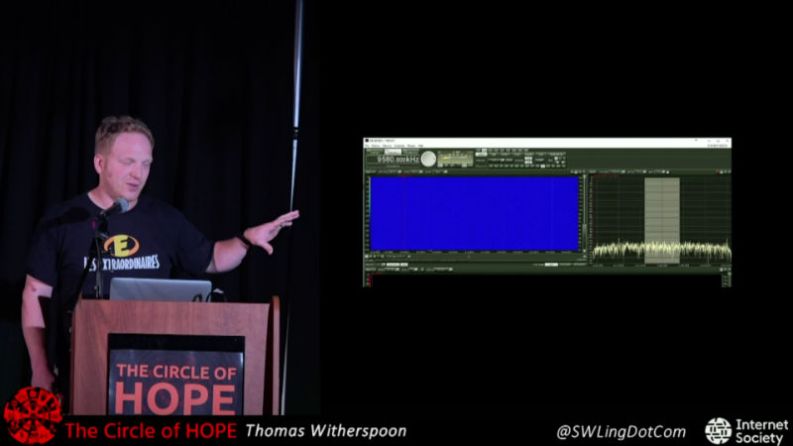 It’s easy to dismiss radio as little more than background noise while we drive. At worst you might even think it’s just another method for advertisers to peddle their wares. But in reality it’s a snapshot of the culture of a particular time and place; a record of what was in the news, what music was popular, what the weather was like, basically what life was like. If it was important enough to be worth the expense and complexity of broadcasting it on the radio, it’s probably worth keeping for future reference.
It’s easy to dismiss radio as little more than background noise while we drive. At worst you might even think it’s just another method for advertisers to peddle their wares. But in reality it’s a snapshot of the culture of a particular time and place; a record of what was in the news, what music was popular, what the weather was like, basically what life was like. If it was important enough to be worth the expense and complexity of broadcasting it on the radio, it’s probably worth keeping for future reference.
